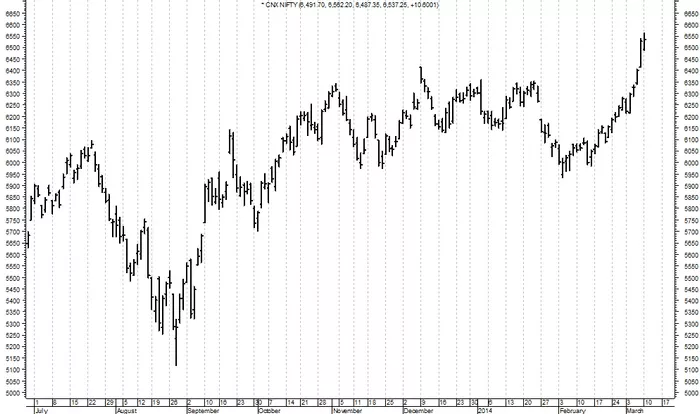Investing in undervalued stocks can be a lucrative strategy for long-term wealth building. Undervalued stocks are those whose current price is lower than their intrinsic value, making them potential opportunities for savvy investors. Identifying these stocks requires a solid understanding of financial metrics, market conditions, and company fundamentals. In this article, we will explore how to identify undervalued stocks, what factors contribute to a stock being undervalued, and the tools and techniques that can aid in this process.
What Are Undervalued Stocks?
An undervalued stock is one that is trading at a price below its true or intrinsic value. The intrinsic value of a stock is determined through an analysis of various factors, including the company’s earnings, growth potential, assets, and the overall market conditions. When a stock is undervalued, it means the market has temporarily mispriced the stock, often due to factors such as poor market sentiment, short-term challenges, or macroeconomic conditions.
Undervalued stocks present an investment opportunity because they have the potential to increase in value over time as the market recognizes their true worth. Investors who can identify undervalued stocks early stand to gain when the stock price eventually rises to reflect the company’s true value.
Why Invest in Undervalued Stocks?
Investing in undervalued stocks offers several potential advantages:
Profit Potential: As the stock price rises to its intrinsic value, investors can enjoy substantial returns.
Reduced Risk: Undervalued stocks are often seen as safer investments since they may be less affected by short-term market fluctuations.
Long-Term Growth: Undervalued stocks may offer strong growth potential as the company improves its performance or as the broader market conditions improve.
Common Indicators of Undervalued Stocks
There are several indicators that can help investors identify undervalued stocks. These indicators often revolve around fundamental analysis, which involves evaluating a company’s financial health, business model, and growth prospects. Let’s take a look at the most common indicators.
1. Price-to-Earnings (P/E) Ratio
The Price-to-Earnings (P/E) ratio is one of the most widely used metrics for evaluating a stock’s valuation. It measures the stock price relative to the company’s earnings per share (EPS).
A lower P/E ratio indicates that the stock is priced lower relative to its earnings, which may suggest it is undervalued. However, a low P/E ratio alone is not enough to determine whether a stock is undervalued. It must be compared to the industry average, historical P/E ratios, and the growth prospects of the company.
Low P/E Ratio vs. Industry Average: A stock with a P/E ratio significantly lower than its industry peers may indicate that it is undervalued.
Low P/E Ratio vs. Historical P/E Ratio: A stock’s current P/E ratio compared to its historical average can provide insight into whether it is undervalued.
A very low P/E ratio could also signal underlying problems with the company, so further analysis is needed to confirm if the stock is genuinely undervalued.
2. Price-to-Book (P/B) Ratio
The Price-to-Book (P/B) ratio is another valuable metric for evaluating a stock’s valuation. The P/B ratio compares a company’s market value (stock price) to its book value (net asset value).
P/B < 1: If the P/B ratio is below 1, it suggests that the stock is trading for less than its book value, which can be a sign of undervaluation. This may indicate that the market is underestimating the company’s assets or future potential.
P/B > 1: A P/B ratio greater than 1 means the stock is trading at a premium to its book value. While this is not necessarily a red flag, it may indicate that the stock is overvalued.
While the P/B ratio can help identify undervalued stocks, it is most effective when used in conjunction with other financial ratios, as some companies (e.g., tech companies) may not have significant tangible assets on their balance sheet.
3. Dividend Yield
For income-focused investors, the dividend yield can be an important indicator of undervaluation. The dividend yield represents the annual dividend payment as a percentage of the stock price.
A higher-than-average dividend yield can indicate that a stock is undervalued, as the company may be offering more income to attract investors. However, a high dividend yield should be evaluated carefully, as it could also indicate financial difficulties if the company is unable to sustain the payout.
Sustainable Dividends: Look for stocks with a history of consistent and sustainable dividend payments. A high yield coupled with a strong track record of dividend payments can be a good indicator of an undervalued stock.
4. Earnings Growth Potential
A key characteristic of undervalued stocks is the potential for strong future earnings growth. Even if a company is currently undervalued, its future growth prospects may justify a higher valuation. To assess earnings growth potential, investors often look at the following:
Earnings Per Share (EPS) Growth
EPS growth is an important metric for evaluating a company’s profitability and ability to generate income for shareholders. A company with a strong history of consistent EPS growth is often considered undervalued if its current stock price does not reflect this growth.
Price-to-Earnings Growth (PEG) Ratio
The PEG ratio is a more refined version of the P/E ratio. It takes into account the company’s expected earnings growth rate.
A PEG ratio less than 1 is considered to be undervalued because it indicates that the stock price is low relative to its expected earnings growth.
Low PEG Ratio: A low PEG ratio (below 1) could be a strong indicator that a stock is undervalued, as it means that the market is underestimating the company’s future growth potential.
5. Debt-to-Equity (D/E) Ratio
The Debt-to-Equity (D/E) ratio is an important metric for assessing a company’s financial health and risk. It compares the company’s total debt to its shareholder equity.
A high D/E ratio may indicate that a company is highly leveraged and could struggle to meet its debt obligations, which may lead to undervaluation. Conversely, a low D/E ratio indicates that the company has lower debt and is financially healthier.
Low D/E Ratio: A lower D/E ratio is typically a sign of financial stability and can be a factor in identifying undervalued stocks, particularly in volatile market conditions.
6. Compare the Stock to Its Industry Peers
One of the most effective ways to identify undervalued stocks is to compare a company to its industry peers. If a stock is trading at a lower valuation than its competitors while offering similar or better growth prospects, it could be undervalued.
Industry Average Ratios: Compare the company’s P/E, P/B, and other valuation ratios to those of similar companies in the same industry. If the stock is trading at a significant discount to its peers, it could be undervalued.
Growth Potential vs. Peers: Consider not only the stock’s valuation but also its growth potential relative to other companies in the sector. If the company has a competitive edge, strong fundamentals, and is trading at a discount, it may be a good buying opportunity.
7. Monitor Market Sentiment and News
Undervalued stocks are often the result of poor market sentiment or temporary issues affecting the company. Monitoring market news and sentiment can help you identify potential opportunities in stocks that are temporarily undervalued due to factors like:
Short-Term Market Fluctuations: Stock prices can become undervalued due to overall market corrections or economic downturns.
Negative News or Misunderstandings: Occasionally, a stock may become undervalued because of negative news that does not truly reflect the company’s long-term prospects. Investigating the news behind these events can help you spot opportunities.
Tools for Identifying Undervalued Stocks
1. Stock Screeners
Stock screeners are online tools that allow you to filter stocks based on specific financial metrics, such as P/E ratio, P/B ratio, dividend yield, and more. Using a stock screener can help you quickly identify potential undervalued stocks based on your chosen criteria.
2. Financial Reports and Earnings Calls
Reviewing a company’s quarterly and annual financial reports, as well as its earnings calls, can provide valuable insights into its financial health and growth prospects. These reports often highlight key metrics like EPS growth, revenue growth, and debt levels, helping you assess the company’s valuation.
3. Analyst Reports
Professional analysts regularly publish reports on stocks, providing recommendations and insights into a company’s valuation. These reports can be a useful resource for identifying undervalued stocks, especially if analysts believe a stock is trading below its fair value.
Conclusion
Identifying undervalued stocks requires a comprehensive approach that combines fundamental analysis, financial ratios, and an understanding of market conditions. By evaluating metrics like P/E ratio, P/B ratio, dividend yield, and earnings growth potential, investors can uncover stocks that are trading below their intrinsic value. Additionally, comparing a stock to its industry peers and monitoring market sentiment can provide further insight into whether a stock is undervalued.
Investing in undervalued stocks can offer substantial long-term rewards, but it requires patience, diligence, and a sound investment strategy. By applying the tools and techniques outlined in this article, you can improve your ability to identify undervalued stocks and build a portfolio with strong growth potential.
Related topics:



























